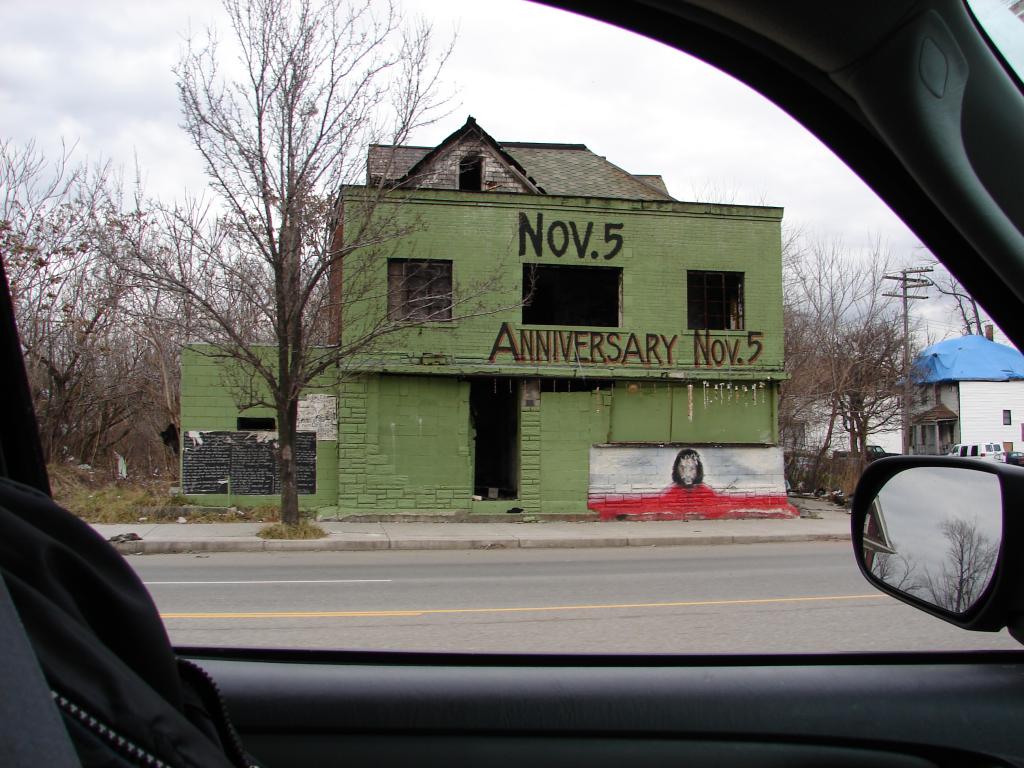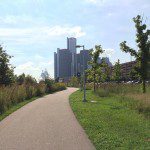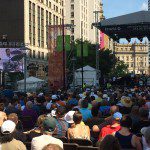First item:
For those of you who don’t do Twitter, a Detroiter (besides the one in the comments) got, er, rather upset that I identified Midtown as a rebranding of the New Center area, so I spent some time trying to figure this out.
I first landed on a Wikipedia map that clearly delineated the neighborhoods/districts and says that everything south of I-94 is “Midtown”; north of there is the New Center area. But this just didn’t seem right to me; that places virtually all the city’s cultural institutions (e.g., Orchestra Hall, the Art Institute and History Museum) in Midtown rather than New Center. And that name just didn’t sound right to me. For a good decade of my life I read the Detroit News daily, and I’ve kept up with my Detroit news (lower case and upper case) since then; I think I’d know what “Midtown” was. And, after all, a definition based on an interstate that didn’t exist when these institutions were being built doesn’t make sense either.
So my husband stumbled upon an article from 2012 that clarifies the mystery to some degree, in an article called, “Would The Real Midtown Please Stand Up?”
There’s a quiet turf war going down in Detroit. Or maybe it’s a capital-intensive neighborhood re-branding campaign. It really depends on who you ask. Whatever you call it, one thing is clear: the area of Detroit that runs along Cass Avenue — from Cass Park to the south and Wayne State to the north — is changing. It isn’t just the rumble of bulldozers clearing ground for huge new projects like the Auburn Building or the much ballyhooed Whole Foods supermarket. It’s the history, the identity of the place, that’s being forgotten. The area once universally known as the Cass Corridor is finding that its memory, its very existence, is being erased, overwritten and systematically re-categorized under the name Midtown.
That being said, I tried to find some older maps of the city, with neighborhoods/districts labelled, that would tell me what area Orchestra Hall was in before the invention of Midtown. Maybe I’ll check the library; even though I’m back home in suburban Chicago, the local history section includes some Detroit items.
Why does it bug me?
Mostly, I think, because “Midtown” just isn’t authentically Detroit. Manhattan has a “midtown” — and an uptown and downtown, presumably initially defined based on “down” and “up” = south and north, or maybe the “up” was a slightly higher/less swampy elevation; I’m not sure. Now, of course, “downtown” simply means “city center” in American English. But “midtown”? It just doesn’t feel, well, Detroit enough.
Second item:
My twitter correspondent insisted that Detroit was truly on its way up, to which I said (judging from this person’s picture) that people have been claiming that since before she was born: the Renaissance Center, the People Mover, the Poletown plant, and, more recently, the Greektown casinos, were all supposed to herald a revival. For a while in the 80s, a warehouse at the edge of Greektown was turned into the sort of venue that was supposed to attract tourists; I remember a fudge shop that hoped to draw customers with its employees making the fudge while singing/chanting some kind of song.
Will this be the time that things really “take”? This newly-rebranded “Midtown” area does seem to be drawing the hipsters who might previously have gone to suburban Ferndale. Will they stick around once they’re no longer young? The Schools of Choice program and the wide availability of charter schools means that the train wreck that is Detroit Public Schools might not be a deal-breaker, but the availability of public services (e.g., police response times) and, of course, general crime rate issues will be a problem.
But Detroit is more than its city center and the people of Detroit consist of more than urban hipsters. It’s simply difficult to fathom what the solution to the depopulated areas is. (And these Detroiters are real Detroiters, and their socioeconomic situation can’t just be subtracted out to measure “how is Detroit doing?”)
In one respect, it’s tempting to say, “demolish the homes as they become abandoned, and hope that the city-center revival spreads outward and inspires a new generation to build on these vacant lots.” And the solution that some Detroit boosters are promoting is urban farming. But it is tremendously difficult to deliver city services to areas that are both poor and very low in density. All of it: police and fire protection, bus service, streetlights, city sewers, road maintenance. (On our drive last week, we passed through two intersections, blinking yellow, with signage that they were being studied for traffic light removal.) Look at a map of a suburban bus system — only a few routes, mostly concentrated on those areas with large apartment complexes — and then consider that Detroit, even before the population crash, was a city of single-family homes, and now a bus system is all the more difficult to sustain. These areas simply cannot be self-supporting in terms of city services, and the denser and the more affluent parts of the city — well, there just aren’t enough of them. Do we just say, “until such time as the city’s population recovers (presuming this happens someday), someone else — the state, the feds — has responsibility for them”?
(By the way: this isn’t an issue for school funding, even though Detroit has serious troubles here too: unlike most areas, money is collected and allocated statewide.)
Third Item:
Detroit is, of course, not the only city to have lost population over time.
Take a look at these tables, compiled from wikipedia and other readily-available data.
Most populous cities in the U.S., 1950, and their population change to 2013
New York City 7%
Chicago -25%
Philadelphia -25%
Los Angeles 97%
Detroit -63%
Baltimore -34%
Cleveland -57%
St. Louis -63%
Washington -18%
Boston -19%
Three cities have had pretty similar drops in population: Detroit, Cleveland, and St. Louis.
So I looked at these three individually:
What do you make of this?
In the first place, St. Louis’s population crash happened a bit earlier, as it lost almost half of its population before 1980. Detroit and Cleveland had similar patterns, except that Detroit lost a full fifth of its population quite recently, in the half decade from 2005 – 2010 (after, according to my twitter correspondent, the revival was already underway).
Of course, what I haven’t shown here is that both Cleveland and St. Louis started out at about half the size of Detroit, so that, even if relative declines were similar, the absolute number of abandoned dwellings is greater in Detroit, by far.
In any case, why aren’t we reading reports of the devastation in these two “sister cities” to Detroit? I can make a couple guesses, for now, anyway:
In the first place, a certain portion of the housing, in any case, was destroyed intentionally, in urban renewal-type projects, similar to the demolition of Chicago’s major public housing complexes in favor of fewer units of mixed housing. There were, of course, similar demolitions for interstate highways, new ballparks and parking lots, and so on. (My St. Louis great-grandmother’s childhood home, per census records, is now a freeway.)
And in the second place, to the extent that the housing was multifamily, a city can de-densify in a less noticiable way. Again, my great-grandmother’s home was an alley apartment, 1290 1/2 Palm Street or some such. My mother grew up in a two-flat in the city (yes, they were part of the exodus in the 50s, moving out to a suburb, adjacent to Ferguson, actually). I could imagine that it’s easy for these multifamily buildings to become single-family with a bit of remodeling. But Detroit has a much greater proportion of single-family housing than other cities.
But that only gets you so far. Anyone else know more?














